
The remainder of the row is devoted to Prospecting Guides & Stains. These are signs that prospectors can look for in the bush, as a guide to the possible presence of mineralisation. In many cases, such guides are brightly coloured stains due to surface weathering. The mineralisation, itself, may be difficult to pick out from the surrounding host rock. However, the coloured stain (or ‘bloom’) will serve to draw attention to it, as though it had been emphasized with a highlighter pen.
PGS#1
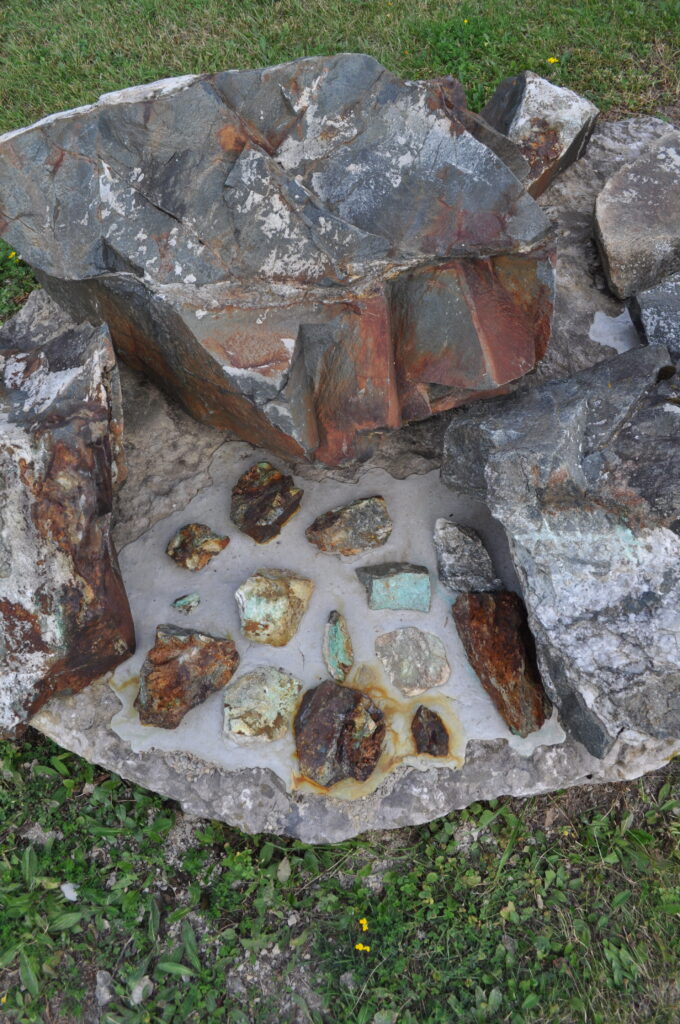
There are several pieces present here, all from a surface showing on the edge of the pit at the Kanichee property north of Temagami. The dark brown, orange, pale brown, black, and, in some cases, red colours are alteration products of iron-bearing minerals in the rock. Together, they comprise what is commonly called Gossan. In some of the other samples here, one can see white calcite as well as bright yellow, relatively unaltered chalcopyrite (Copper Sulphide), and a common copper alteration stain – Malachite (bright green, copper hydroxide carbonate).
Internet real world…seek: Cu-Ni-Co deposit Voisey’s Bay-Wat on Earth
PGS#2
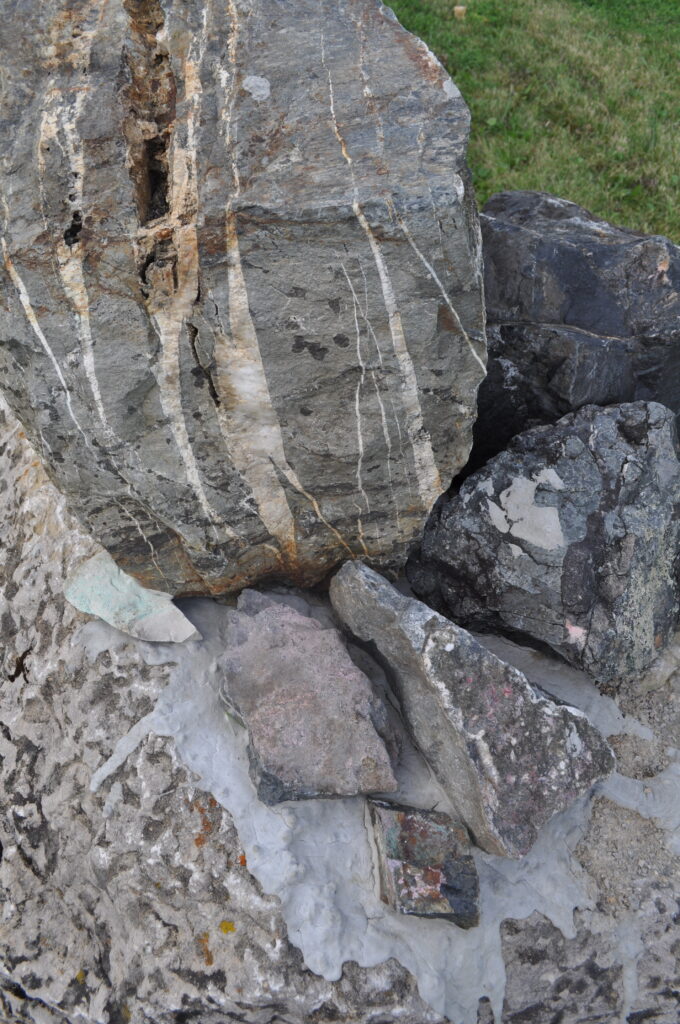
Several white quartz veins, one of which contains a vug with crystals inside, cut the largest piece here. There are also some slickensides (see UNGS #4b) on the top surface, and some bright green malachite copper stain on some faces. One of the smaller pieces shows the pink stain known as ‘Cobalt Bloom’. This stain is actually an alteration mineral called erythrite, and it forms wherever cobalt mineralisation is exposed to the weather. Since cobalt mineralisation is commonly associated with native silver, this Cobalt Bloom became a favourite prospecting guide in the Cobalt camp. Another Cobalt area stain that will eventually join these samples is annabergite, or Nickel Bloom. It is generally pale apple green in colour, and forms over nickel mineralisation, especially nickelite, where it is exposed at surface. Finally, the last piece included here shows intense gossan (see PGS5) reaction, as the entire sample has been altered to a dark brown to black mass.
Internet history-seek: Cobalt-Gowganda Silver Mining Area-David Joyce
PGS#3
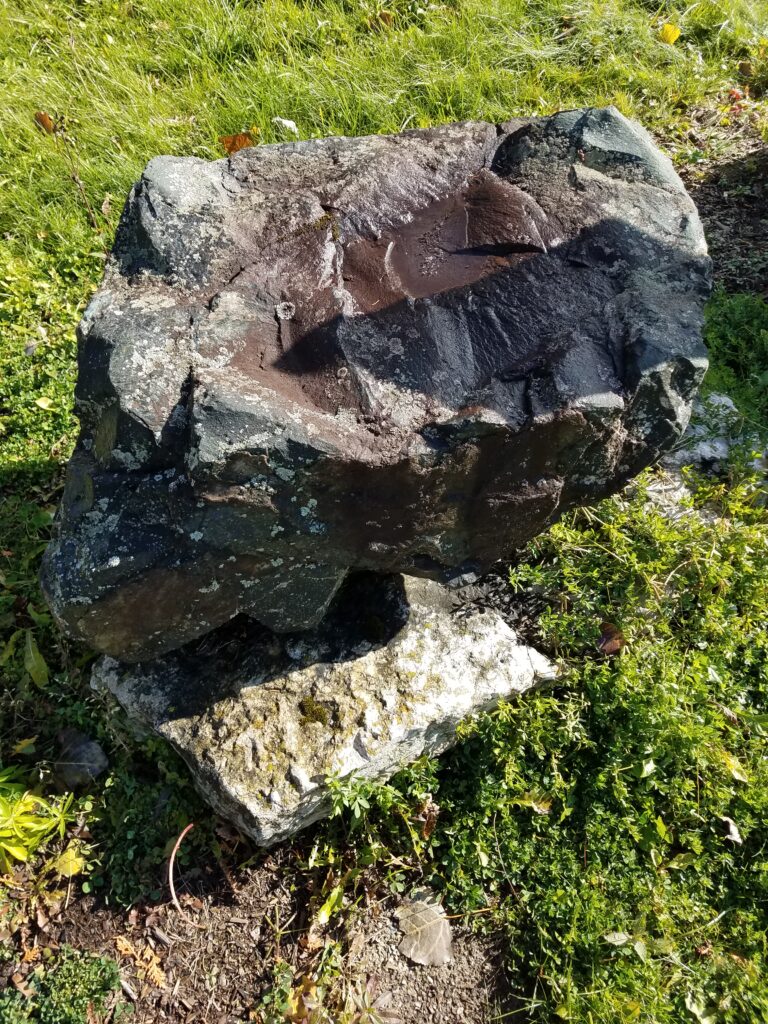
This sample comes from the 3-M Canada operation at Havelock, Ontario. It is trap rock, which is another term for diabase or gabbro. This material is specifically used for purposes such as the construction of roads in Southern Ontario. As another example, trap rock from Bruce Mines in Northern Ontario was shipped to Cleveland, and still forms the roadbed for much of that city’s rail, road and tram lines. This sample contains serpentine, with white/brown carbonate also visible, but the alteration mineral of particular note is the shiny black to dark green chlorite. Chlorite is a common alteration mineral, especially in volcanic rocks, but aggregates or masses of it can point to certain types of nearby minerals (e.g. massive sulphides) while the rock itself is environmentally friendly.
Internet Quarry Video…seek: Ontario Trap Rock – Tomlinson Group
PGS#4
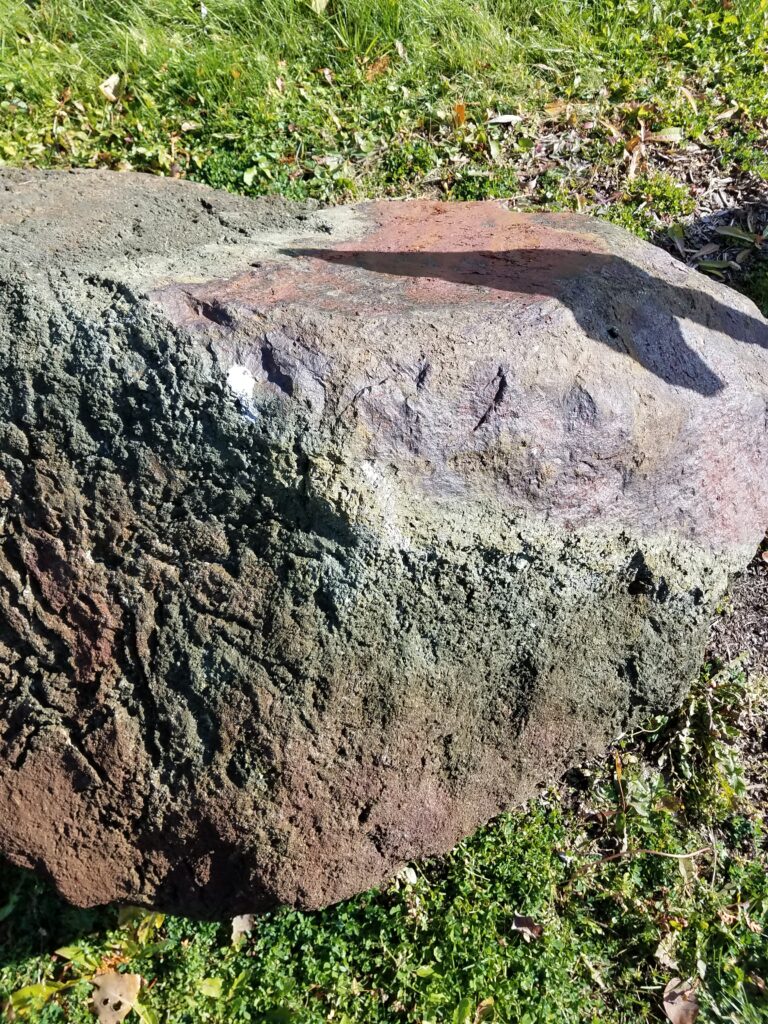
This sample is from the Kam-Kotia property west of Timmins (see MO#4B). It is included in this section to illustrate the leaching action on the massive sulphides to form gossan. This sample underwent about three decades of leaching in the tailings pond of that property, and the lower 90% of the sample was subject to similar processes as take place in acid mine leaching operations. The upper 10% was not in water, and has not corroded to the same extent. This is Acid Mine Drainage (AMD)
Internet…seek: Acid Mine Drainage: Past, Present…Future? Wat on Earth
PGS#5
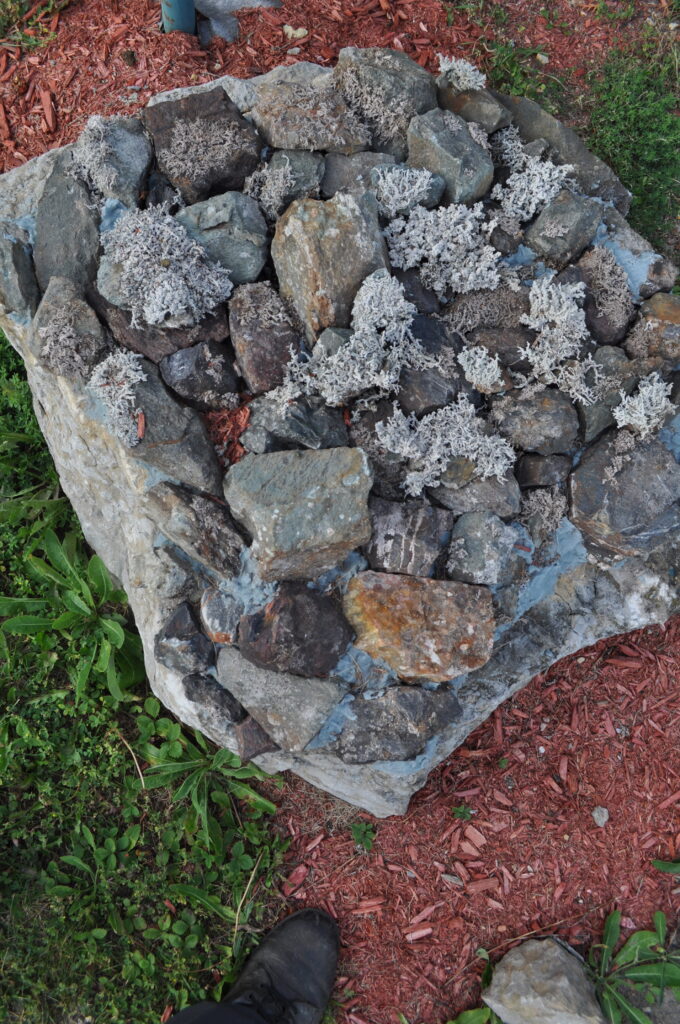
This collection comes from the Sherman Mine in Temagami as well as the nearby Kanichee
Mine. Both were open pit operations, with abundant rock waste in dumps and tailing dams. The Sherman waste rock is well known to contain a form of phosphate. Up to the end of operations, staff reported it as being Fluorapatite…Apatite for short. This knowledge of phosphate presence was important as soil tests of tailings suggested that they needed no additional phosphate to become viable soils for grass, legumes, and woody species in a tailings reclamation program. This would save large amounts of money by not having to add expensive phosphorous fertilizer.
Since closure some 3 decades ago, new information indicates that the Phosphorous came from a mineral called XENOTIME-(Y). The chemical formulae is Y(P04). It is also a source of Yttrium.
Whatever the source, specific rocks that have higher than average amounts of this mineral will develop a covering of a specific lichen that appears to be much like the lichen referred to as “Caribou Moss”. The moss takes 3 decades to fully develop. The majority of broken mine rocks around them will remain bare of moss.
In the Temagami area, we can use the presence of thick white moss/lichen attached directly to rocks as a mineral indicator that the rock (be it Xenotime-(Y) or Apatite) contains large amounts of Phosphorous.
Internet Seek: mindat.org>shermanmine